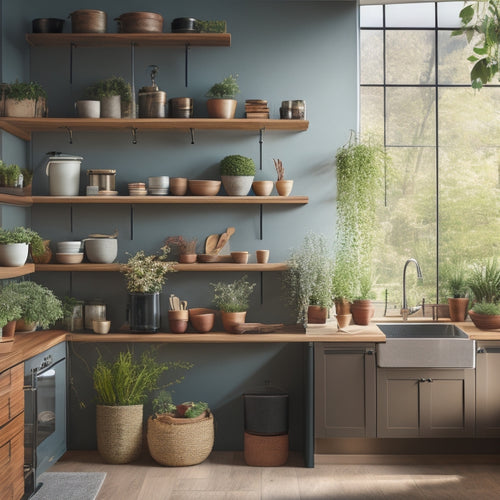
Mastering Plastic Printing: Techniques and Regulations Explained
Share
Mastering plastic printing requires a deep understanding of the unique characteristics of various plastic materials, including polystyrene, polypropylene, polyester, and PVC. Ink adhesion, surface preparation, and material compatibility with ink selection are essential for successful printing. Choosing the appropriate equipment, such as Continuous Inkjet (CIJ) Printers or UV Printers, and adhering to regulations, including expiration dates, lot numbers, and environmental guidelines, ensures compliance and quality. Precise design considerations, including plastic material properties and container shape, are necessary for ideal print quality. By grasping these fundamental concepts, manufacturers can achieve high-quality printed plastic containers that meet industry standards and consumer expectations, and taking it a step further can reveal a world of possibilities.
Key Takeaways
• Ink adhesion and surface preparation are crucial for successful printing on plastic containers, considering material properties and compatibility.
• Choosing suitable equipment, such as CIJ, Laser, or UV printers, ensures high-quality printing and efficient production.
• Regulations like expiration dates, lot numbers, and labeling requirements must be followed to ensure consumer safety and prevent legal repercussions.
• Designers must consider plastic material properties, container shape, and surface characteristics when selecting printing techniques and solvent-based inks.
• Compliance with industry standards and regulations guarantees printed plastic containers meet safety and quality standards, ensuring traceability and product recall efficiency.
Printing on Plastic Containers
The diverse array of plastic materials, such as polystyrene, polypropylene, polyester, and PVC, demands a thorough grasp of their unique properties to guarantee successful printing on plastic containers. Ink adhesion and surface preparation are vital considerations, as some plastics require pre-treatment to secure a strong bond between the ink and the material.
Additionally, plastic material compatibility with ink selection is essential, as certain inks may not adhere well to specific plastics. A meticulous approach to surface preparation and ink selection can prevent printing defects and ensure a high-quality finish.
Equipment Selection and Setup
For printing on plastic containers, selecting the appropriate equipment is crucial, as it directly impacts the quality and efficiency of the printing process. Printer compatibility is key, as different printers are suited for specific plastic materials and printing methods.
Continuous Inkjet (CIJ) Printers, Laser Systems, and UV Printers are popular options for plastic printing. Surface preparation is also essential, as clean and dry surfaces guarantee optimal ink adhesion. Gentle cleaning solutions should be used to avoid scratches, and handling the containers with care is important to prevent damage.
Fine-tuning print heads or pressure for accuracy is vital, and regular maintenance ensures consistent results. By choosing the right equipment and preparing surfaces properly, print quality and efficiency can be greatly enhanced.
Regulations and Compliance Codes
Compliance with regulations governing printed plastic containers is crucial, as it guarantees consumer safety and prevents legal repercussions. Adhering to industry standards and compliance guidelines ensures that printed plastic containers meet the required safety and quality standards.
To guarantee compliance, consider the following key regulations:
-
Expiration dates and lot numbers: Ensure precise and legible printing of expiration dates and lot numbers for traceability and product recall purposes.
-
Barcode and labeling requirements: Follow industry standards for barcode and labeling requirements, such as GS1 and ISO standards.
-
Food and pharmaceutical packaging regulations: Adhere to regulations specific to food and pharmaceutical packaging, such as FDA and EU regulations.
- Environmental regulations: Follow environmental regulations, such as those related to recycling and waste management.
Designing for Plastic Surfaces
Careful consideration of plastic material properties, container shape, and surface characteristics is essential when designing and customizing printed plastic containers.
The surface properties of the plastic material have a significant impact on ink adhesion, which affects the overall print quality and durability. Designers must select appropriate printing techniques and solvent-based inks that are compatible with the specific plastic surface.
For instance, polystyrene and polypropylene require pre-treatment for best ink adhesion. The container shape and size also influence the design, as curved or irregular surfaces present unique challenges.
Applications and Services Explained
Printed plastic containers have numerous applications across various industries, including consumer packaging, pharmaceuticals, and food processing. They can enhance product presentation, provide essential product information, and guarantee product safety. These applications require careful consideration of consumer packaging strategies to guarantee effective communication of brand identity and values.
When exploring printed plastic container services, consider the following key aspects:
-
Bulk purchase options: Negotiate with suppliers for cost-effective bulk orders to meet high-volume demands.
-
Customization capabilities: Confirm the printing company can accommodate unique design requirements and plastic material specifications.
-
Regulatory compliance: Verify that the printed containers meet federal regulations for product safety and traceability.
- Material selection: Choose plastic materials that align with the application, ensuring durability and product safety.
Frequently Asked Questions
How Do I Troubleshoot Common Issues With Plastic Printing?
"When troubleshooting common plastic printing issues, don't 'bite off more than you can chew.' Start by scrutinizing printing parameters, such as temperature and pressure, and assess filament quality to identify the root cause of the problem."
What Are the Environmental Impacts of Plastic Printing Processes?
The environmental impacts of plastic printing processes are multifaceted, encompassing high energy consumption, inadequate waste management, and pollution, underscoring the need for sustainable practices to mitigate ecological harm and guarantee a safer, more environmentally conscious industry.
Can I Use Plastic Printing for Small-Batch or One-Off Productions?
Imagine a bespoke jewelry box, uniquely printed for a special occasion. For small-batch or one-off productions, plastic printing offers customization options, but cost considerations are essential, as low-volume orders may incur higher costs per unit, making it vital to weigh design complexity against production expenses.
How Do I Store and Maintain Printed Plastic Containers Properly?
To guarantee the longevity of printed plastic containers, proper storage and maintenance are essential. Store containers in a cool, dry environment, away from direct sunlight, and maintain a consistent temperature between 60°F to 75°F (15°C to 24°C) with relative humidity below 60%.
Are There Any Eco-Friendly Alternatives to Traditional Plastic Printing Materials?
When seeking eco-friendly alternatives to traditional plastic printing materials, consider sustainable options like biodegradable materials, green printing methods, and recyclable filaments, ensuring a reduced environmental footprint while maintaining product safety and quality.
Related Posts
-

Tips for Choosing Under-Cabinet Lighting Fixtures
When choosing under-cabinet lighting fixtures, consider your kitchen's layout and functionality. Assess countertop ma...
-

Rustic Hanging Racks for Country-Style Kitchens
Rustic hanging racks are a game changer for your country-style kitchen, blending functionality with charm. They maxim...
-

Easy-To-Install Kitchen Wall-Mounted Racks
Installing easy-to-use kitchen wall-mounted racks is a smart way to maximize your space. These racks help keep your c...


